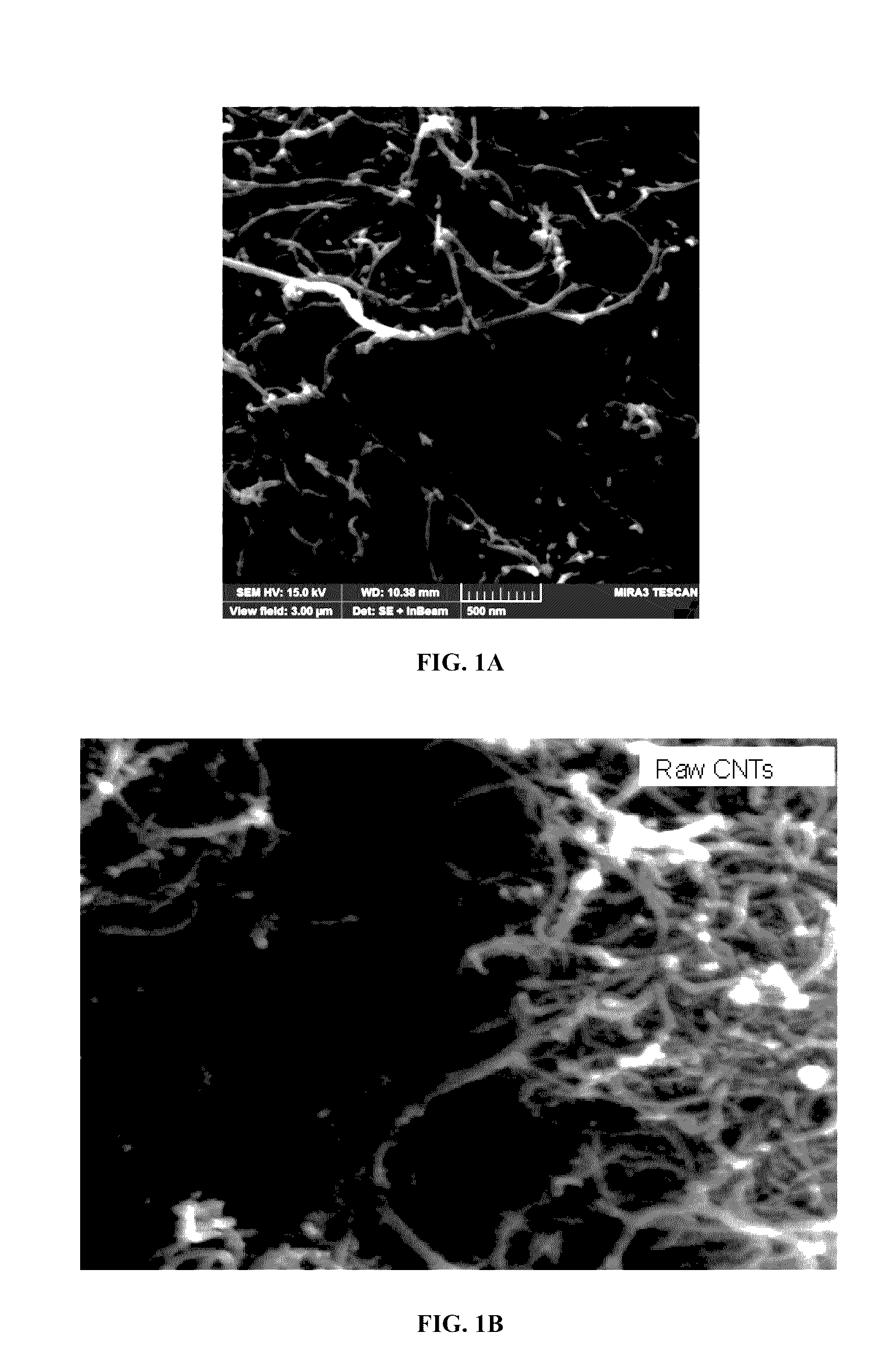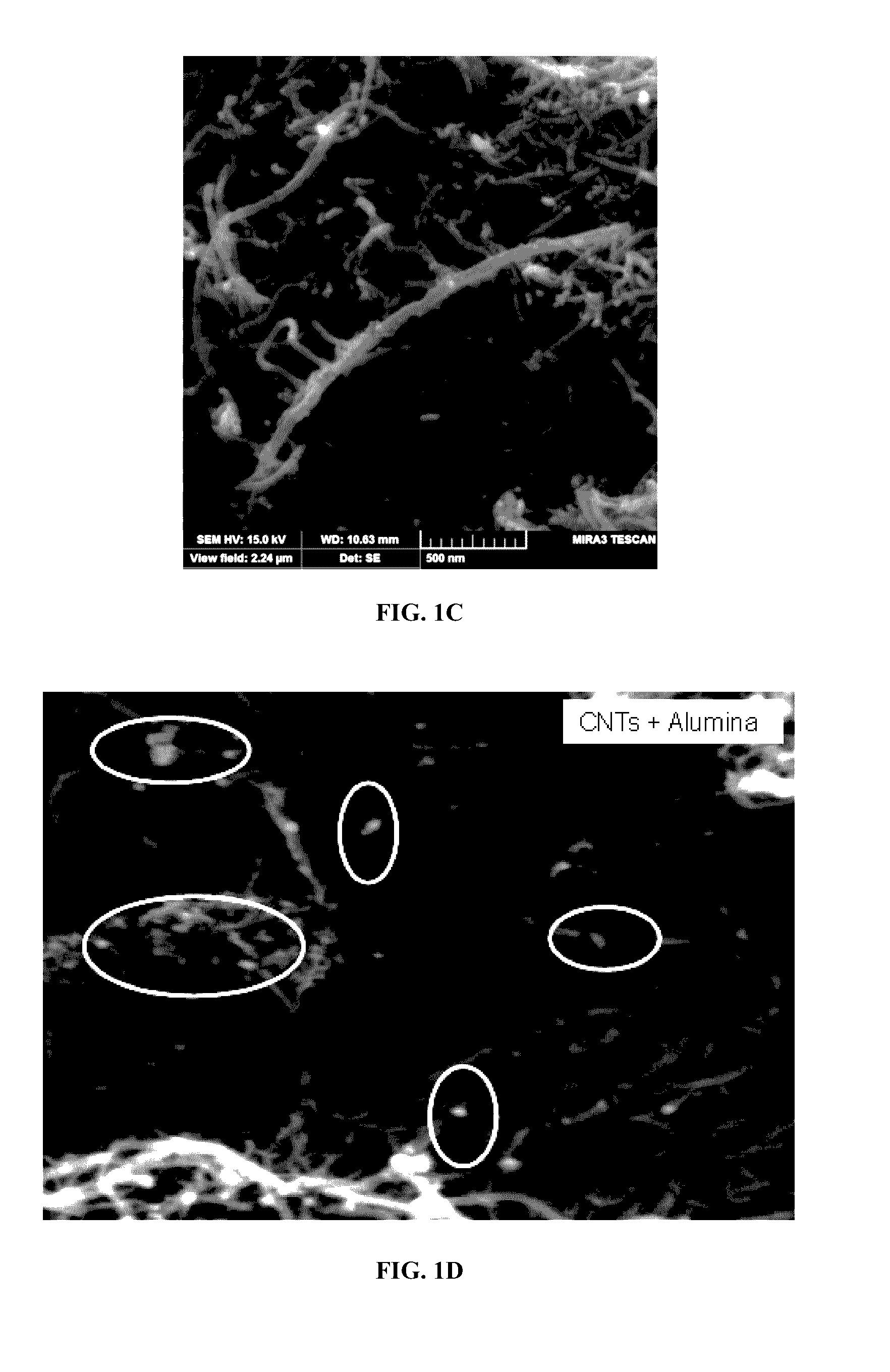Adsorption of aromatic hydrocarbons from water using metal oxide impregnated carbon nanotubes
a technology of metal oxide and carbon nanotubes, which is applied in the direction of inorganic chemistry, water treatment compounds, alkali metal oxides/hydroxides, etc., can solve the problems of pollutants frequently found in groundwater and achieve the effect of increasing adsorption
- Summary
- Abstract
- Description
- Claims
- Application Information
AI Technical Summary
Benefits of technology
Problems solved by technology
Method used
Image
Examples
example 1
Chemicals
[0144]Commercial multiwall carbon nanotubes were purchased from “Times Nano” with purity of greater than 95% by weight and an outer diameter of approximately 10-20 nm. Other chemicals which include iron nitrate, aluminum nitrate, zinc nitrate, ethanol, benzene (99.7% purity), nitric acid (>69% purity) and sodium hydroxide of analytical grade, were purchased from Sigma Aldrich and utilized directly without any further treatment or purification in the embodiments described herein.
example 2
Preparation of Adsorbent Materials
[0145]For impregnation of metal oxide nanoparticles on multi-walled carbon nanotubes (MWCNTs) the required amount of MWCNTs was weighed and dissolved in a sufficient amount of ethanol solvent and ultra-sonicated for half an hour to deagglomerate and disperse the MWCNTs in the solvent. An appropriate amount (10% weight based) of metal salt (aluminum nitrate, iron nitrate, zinc nitrate) was dissolved in a sufficient amount of ethanol, added to the MWCNTs solution and sonicated for a further half an hour. The sample was then shifted to an oven for drying at 90° C. After complete drying of ethanol, the sample was placed in a furnace and calcined at 350° C. for 4 hours.
example 3
Characterization of Adsorbents
[0146]The adsorbents were analyzed using various characterization techniques. Physical morphology and structure analysis was carried out using a scanning electron microscope (SEM) and thermogravimetric analysis (TGA) was carried out using TGA equipment in order to check the weight percent and purity of the carbon nanotubes.
[0147]The SEM images of both raw MWCNTs (FIG. 1A and FIG. 1B), aluminum oxide nanoparticle (approximately 1-15 nm) impregnated MWCNTs (FIG. 1C and FIG. 1D), zinc oxide nanoparticle impregnated MWCNTs (FIG. 1E) and iron oxide nanoparticle impregnated (FIG. 1F) are presented. It is observed that the surface of raw MWCNTs was smooth but more agglomerated as shown in FIG. 1A and FIG. 1B. In FIG. 1C and FIG. 1D aluminum oxide nanoparticle clusters can be observed along with decreased agglomeration of the MWCNTs. Energy dispersive X-ray (EDX) analysis further confirms the loading of raw MWCNTs (FIG. 3A) with the aluminum oxide nanoparticles...
PUM
| Property | Measurement | Unit |
|---|---|---|
| Fraction | aaaaa | aaaaa |
| Fraction | aaaaa | aaaaa |
| Fraction | aaaaa | aaaaa |
Abstract
Description
Claims
Application Information
 Login to View More
Login to View More - R&D
- Intellectual Property
- Life Sciences
- Materials
- Tech Scout
- Unparalleled Data Quality
- Higher Quality Content
- 60% Fewer Hallucinations
Browse by: Latest US Patents, China's latest patents, Technical Efficacy Thesaurus, Application Domain, Technology Topic, Popular Technical Reports.
© 2025 PatSnap. All rights reserved.Legal|Privacy policy|Modern Slavery Act Transparency Statement|Sitemap|About US| Contact US: help@patsnap.com



